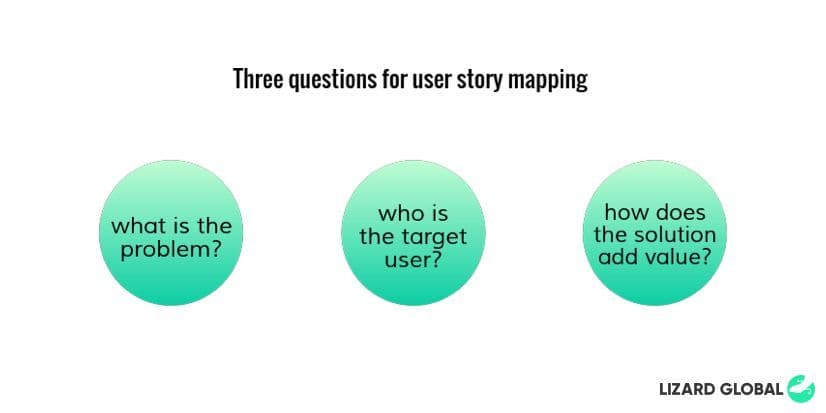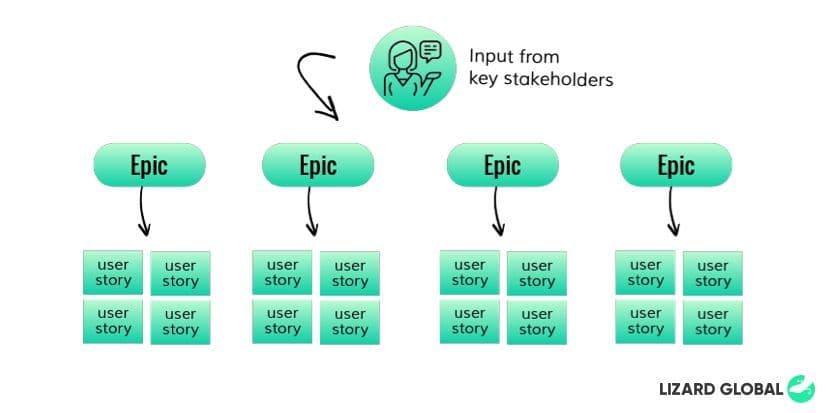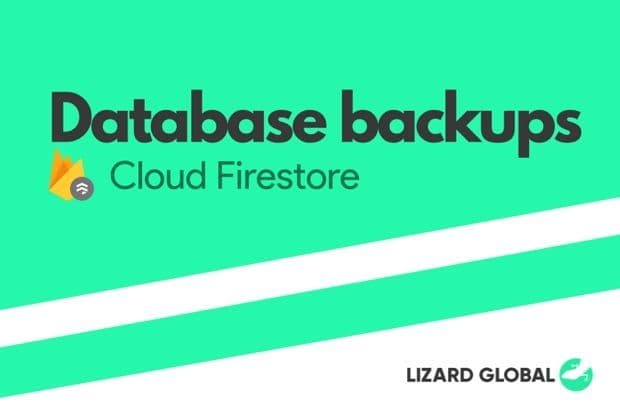agile
lean startup
+ 5 more ...
The Road Towards Successful User Story Mapping
29 Jul 2020
by Lotte, Digital Content Specialist
29 Jul 2020
by Lotte, Digital Content Specialist
agile
lean startup
user story mapping
app development
end-users
human-centered
design thinking
The Road Towards Successful User Story Mapping
Table of contents
Contact us
We will get back to you in the next 48 hours.

User story mapping forms an indispensable part of product development and working towards an MVP.
User story mapping is an indispensable practice within the agile creation of a product backlog of a scrum sprint. The process of User Story Mapping involves visually organizing and prioritizing defined Themes, Epics, and User Stories to make sure that key user stories or epics are not left out. It’s a way to visualize, organize, and prioritize User Stories. The story map should perfectly capture the journey of the user and their interaction with the product. This includes the detailed description of all the actions they undertake. The user story map helps sprint team members to make sure they’re on the same page in all phases of the development process, from the beginning of development to the continuous delivery of new releases.
User story mapping: the basics
User story mapping is very helpful in keeping track of little details that might get lost in the process of empathizing with the end-user and defining your product, but form an essential element of the end-product. It is a key component of the Agile development methodology.
User Story Mapping is also useful for:
- Making sure the product puts the user and his/her experience first
- Properly prioritizing development so that you are delivering the most important requirements first
- Splitting large or complex requirements into smaller and coherent pieces
- Improving the overall communication with the key stakeholders
- Guiding the involved team in developing a common understanding of the requirements
- Helping the formation of a concrete budget estimation
The skeleton of a user story should consist of a specified type of user, a specified feature, and a specified experience of interaction with that feature. It looks a bit like this:
“As a [type of user] I want [a particular feature] in order to [interaction description].”
This fairly simple sentence allows sprint teams to write user stories in any level of detail, not matter how extensive or concise. Epics (a term often used in Agile development) define themselves as the highest level form or a user story, covering a large range of functionalities and features. Usually, these epics are broken down into sets of smaller user stories, in order to make it manageable to achieve the development of a feature in one sprint. Having a template user story setup like the one above is reusable for various kinds of features and users, and therefore contributes to the iterative and Agile nature of product development.

5 Elements of successful user story mapping
As you can see, user story mapping, if done correctly, can significantly simplify and clear up the backlog, and thereby improve the agility of the sprint sessions and the road towards an MVP and, eventually, a successful end-product. But how exactly does it work? This blog dives into the 5 essential elements of successful user story creation and mapping in app development:
Framing the user journey
This is the first and foremost step of creating a user story. In this step the team concretizes the most important information they need in order to create a clear image of the problem and possible solutions. By framing the user journey, it’s essential to focus on the following questions:
- What is the problem that needs to be solved?
- Who is the specific user using the product?
- How does the solution add value to the target user?
The epic
Epics of user story mapping consist of the most important steps taken regarding the interaction of the user with the product. This involves the entire user journey described in high-level actions, from start to finish. While creating epics, it’s important not to go too much into detail, that’s what user stories are for. Take, for example, an app for renting accommodations. Some of the epics could look a bit like this:
- Sign up, create an account
- Search for accommodations
- View and scroll through the results
- Select a desired accommodation and access its key information
- Book the desired accommodation
- Receive a confirmation of the booking
- Write a review for the accomodation
As you see, this is a very general description of the product, but gives a good insight into the main functionalities. Once these epics are established, the team can focus on each single point and concretize it by turning them into sets of smaller and more detailed user stories structured in a narrative flow.
The breakdown
Once there’s a clear overview of the main functionalities in a structured and chronological order, the team can begin breaking down the high-level steps into smaller, bite-sized pieces (user stories) that describe the steps that are taken in the process of, for example, searching for accommodations. Can the user filter on specific qualities? What specific qualities should be included in the choice? Which of these qualities should be prioritized? All these questions can be answered by focussing on the user in user story format. If the target user group consists of students between the ages of 18 and 25 with a limited budget, filtering by price range will have a higher priority than the star rating. For example: “As a renter between the age of 18 and 25, I want to be able to filter results by price so I can find an accommodation within my budget.”

Mind the gaps
After creating a detailed user story map for the functionalities of the product, it’s essential to go through the functionalities and details and make sure nothing is overlooked. Perhaps all the main functionalities are broken down into smaller user stories, but there might be aspects that are overlooked. The creation of a user story following a specific function can create a new problem that needs to be solved with the implementation of another feature. Only when the flow of functionalities within the user journey is airtight, the team can start prioritizing the worked out user stories.
Prioritize
Once all user stories are documented and structured, they have to be prioritized in order of importance. After all, not all functionalities can be implemented in the first version. Some features are essential for developing an MVP, while other features are of less importance and can be postponed to later versions. It might even be that some features won’t be implemented at all if the user feedback shows that they don’t actually need it. Keep in mind that the epics are already structured, so this phase focuses solely on the prioritization of detailed user stories. Once all functionalities and features are prioritized, it’s easier to create a well-structured sprint planning.
Slice up sprints
This is the point where all user stories are divided into iterations, or sprints. As it’s possible that not all user stories can be implemented in a single sprint, you create “slices” of collections of user stories based on their priority. The first slices must be a combination of features that are essential in creating the MVP. So, what minimally viable features are needed to create a product that’s ready for use? So, while epics are turned into smaller user stories, these user stories may be broken down into even smaller tasks and details.
Once this first slice is created, the next slice of features can be assigned to the next iteration. Of course, the contents of the iterations can change based on the user feedback gathered from earlier versions of the product. This feedback decides if some features should be higher on the backlog, or even entirely skipped. But even though the contents of these sprint slices continuously change, it’s important to at least have a broad and communal understanding of what needs to happen and when.
So, what now?
Well, what happens next? We now have a foundation of ideas that’s solid enough to begin our iterative sprint process. Curious what a typical scrum sprint looks like at Lizard Global? Check out our blog, and learn everything you need to know about the agile development process of your app.
Interested in partnering up? At Lizard Global, we guide you through the entire process of app development, from digital and technical consultancy, business research, and digital conceptualization, to UI/UX design, technical development, and a solid go-to-market strategy. As your full stack digital partner we walk the path towards the success of your app together, hand in hand, with the needs of your end-users and yourself as a number one priority. Get in contact!

User story mapping forms an indispensable part of product development and working towards an MVP.
User story mapping is an indispensable practice within the agile creation of a product backlog of a scrum sprint. The process of User Story Mapping involves visually organizing and prioritizing defined Themes, Epics, and User Stories to make sure that key user stories or epics are not left out. It’s a way to visualize, organize, and prioritize User Stories. The story map should perfectly capture the journey of the user and their interaction with the product. This includes the detailed description of all the actions they undertake. The user story map helps sprint team members to make sure they’re on the same page in all phases of the development process, from the beginning of development to the continuous delivery of new releases.
User story mapping: the basics
User story mapping is very helpful in keeping track of little details that might get lost in the process of empathizing with the end-user and defining your product, but form an essential element of the end-product. It is a key component of the Agile development methodology.
User Story Mapping is also useful for:
- Making sure the product puts the user and his/her experience first
- Properly prioritizing development so that you are delivering the most important requirements first
- Splitting large or complex requirements into smaller and coherent pieces
- Improving the overall communication with the key stakeholders
- Guiding the involved team in developing a common understanding of the requirements
- Helping the formation of a concrete budget estimation
The skeleton of a user story should consist of a specified type of user, a specified feature, and a specified experience of interaction with that feature. It looks a bit like this:
“As a [type of user] I want [a particular feature] in order to [interaction description].”
This fairly simple sentence allows sprint teams to write user stories in any level of detail, not matter how extensive or concise. Epics (a term often used in Agile development) define themselves as the highest level form or a user story, covering a large range of functionalities and features. Usually, these epics are broken down into sets of smaller user stories, in order to make it manageable to achieve the development of a feature in one sprint. Having a template user story setup like the one above is reusable for various kinds of features and users, and therefore contributes to the iterative and Agile nature of product development.

5 Elements of successful user story mapping
As you can see, user story mapping, if done correctly, can significantly simplify and clear up the backlog, and thereby improve the agility of the sprint sessions and the road towards an MVP and, eventually, a successful end-product. But how exactly does it work? This blog dives into the 5 essential elements of successful user story creation and mapping in app development:
Framing the user journey
This is the first and foremost step of creating a user story. In this step the team concretizes the most important information they need in order to create a clear image of the problem and possible solutions. By framing the user journey, it’s essential to focus on the following questions:
- What is the problem that needs to be solved?
- Who is the specific user using the product?
- How does the solution add value to the target user?
The epic
Epics of user story mapping consist of the most important steps taken regarding the interaction of the user with the product. This involves the entire user journey described in high-level actions, from start to finish. While creating epics, it’s important not to go too much into detail, that’s what user stories are for. Take, for example, an app for renting accommodations. Some of the epics could look a bit like this:
- Sign up, create an account
- Search for accommodations
- View and scroll through the results
- Select a desired accommodation and access its key information
- Book the desired accommodation
- Receive a confirmation of the booking
- Write a review for the accomodation
As you see, this is a very general description of the product, but gives a good insight into the main functionalities. Once these epics are established, the team can focus on each single point and concretize it by turning them into sets of smaller and more detailed user stories structured in a narrative flow.
The breakdown
Once there’s a clear overview of the main functionalities in a structured and chronological order, the team can begin breaking down the high-level steps into smaller, bite-sized pieces (user stories) that describe the steps that are taken in the process of, for example, searching for accommodations. Can the user filter on specific qualities? What specific qualities should be included in the choice? Which of these qualities should be prioritized? All these questions can be answered by focussing on the user in user story format. If the target user group consists of students between the ages of 18 and 25 with a limited budget, filtering by price range will have a higher priority than the star rating. For example: “As a renter between the age of 18 and 25, I want to be able to filter results by price so I can find an accommodation within my budget.”

Mind the gaps
After creating a detailed user story map for the functionalities of the product, it’s essential to go through the functionalities and details and make sure nothing is overlooked. Perhaps all the main functionalities are broken down into smaller user stories, but there might be aspects that are overlooked. The creation of a user story following a specific function can create a new problem that needs to be solved with the implementation of another feature. Only when the flow of functionalities within the user journey is airtight, the team can start prioritizing the worked out user stories.
Prioritize
Once all user stories are documented and structured, they have to be prioritized in order of importance. After all, not all functionalities can be implemented in the first version. Some features are essential for developing an MVP, while other features are of less importance and can be postponed to later versions. It might even be that some features won’t be implemented at all if the user feedback shows that they don’t actually need it. Keep in mind that the epics are already structured, so this phase focuses solely on the prioritization of detailed user stories. Once all functionalities and features are prioritized, it’s easier to create a well-structured sprint planning.
Slice up sprints
This is the point where all user stories are divided into iterations, or sprints. As it’s possible that not all user stories can be implemented in a single sprint, you create “slices” of collections of user stories based on their priority. The first slices must be a combination of features that are essential in creating the MVP. So, what minimally viable features are needed to create a product that’s ready for use? So, while epics are turned into smaller user stories, these user stories may be broken down into even smaller tasks and details.
Once this first slice is created, the next slice of features can be assigned to the next iteration. Of course, the contents of the iterations can change based on the user feedback gathered from earlier versions of the product. This feedback decides if some features should be higher on the backlog, or even entirely skipped. But even though the contents of these sprint slices continuously change, it’s important to at least have a broad and communal understanding of what needs to happen and when.
So, what now?
Well, what happens next? We now have a foundation of ideas that’s solid enough to begin our iterative sprint process. Curious what a typical scrum sprint looks like at Lizard Global? Check out our blog, and learn everything you need to know about the agile development process of your app.
Interested in partnering up? At Lizard Global, we guide you through the entire process of app development, from digital and technical consultancy, business research, and digital conceptualization, to UI/UX design, technical development, and a solid go-to-market strategy. As your full stack digital partner we walk the path towards the success of your app together, hand in hand, with the needs of your end-users and yourself as a number one priority. Get in contact!







